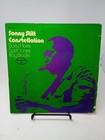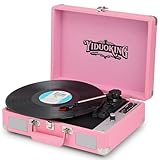Sonny Stitt Vinyl Records Lps For Sale
Check out these new and used Sonny Stitt vinyl records LPs for sale. We recommend starting your Sonny Stitt vinyl collection with the essential albums Early Modern, Battle Of Birdland and At The Hi-Hat. Our inventory is always changing, so check back often, or browse our list of vinyl records for sale from jazz musicians.
Auto Amazon Links: No products found.

Sonny Stitt: Exploring the Jazz Legacy
The Early Years of Sonny Stitt
Sonny Stitt, born Edward Boatner Jr. on February 2, 1924, in Boston, Massachusetts, was a prominent American jazz saxophonist of the bebop and hard bop eras. Renowned for his virtuosic improvisation skills, Stitt played alto and tenor saxophones with a distinctive, soulful style that left an indelible mark on the jazz scene. His early exposure to music, coupled with his innate talent, laid the foundation for a remarkable career.
Musical Influences
Stitt’s musical journey began with exposure to the vibrant jazz culture of his hometown. Influenced by the likes of Charlie Parker, a pioneer in the bebop genre, Stitt started honing his craft. The saxophonist’s ability to emulate Parker’s rapid-fire improvisations earned him the nickname “Little Bird,” a nod to Parker’s moniker, “Bird.”
Sonny Stitt Vinyl: Capturing the Essence on Record
Stitt’s discography spans a prolific career, with numerous albums that showcase his evolution as an artist. The warmth and richness of vinyl have a unique way of preserving the essence of his performances. Let’s delve into some standout albums that exemplify the brilliance of Sonny Stitt on vinyl.
1. “New York Jazz”
Released in 1956, “New York Jazz” is a stellar example of Stitt’s early work. The album features him in a quintet setting, delivering a series of hard bop tunes with impeccable technique and emotional depth. The vinyl format enhances the warmth of Stitt’s saxophone, making it a must-have for enthusiasts of the golden era of jazz.
2. “Stitt’s Bits”
“Stitt’s Bits,” released in 1961, showcases Stitt’s versatility as a saxophonist. The album, backed by a rhythm section featuring piano, bass, and drums, explores various moods and tempos. The vinyl edition of “Stitt’s Bits” allows listeners to appreciate the nuanced interplay between Stitt and his fellow musicians, capturing the spontaneity of a live performance.
3. “Soul Shack”
In 1963, Stitt released “Soul Shack,” an album that delves into soul and R&B influences. With its infectious grooves and Stitt’s soulful saxophone lines, the record stands as a testament to the artist’s ability to embrace different genres while maintaining his signature style. The vinyl version of “Soul Shack” provides an immersive experience, transporting listeners to the era of soulful jazz exploration.
Sonny Stitt’s Musical Odyssey
Stitt’s musical journey wasn’t confined to a specific era or style. His ability to adapt and experiment allowed him to explore various facets of jazz, leaving an indelible mark on the genre.
Bebop Mastery
During the bebop era, Stitt’s mastery of the alto saxophone became increasingly evident. Albums like “The Hard Swing” and “Kaleidoscope” capture the essence of bebop, with Stitt’s intricate improvisations and swift, melodic lines taking center stage. The vinyl editions of these albums serve as time capsules, preserving the dynamic energy of the bebop movement.
Hard Bop Explorations
As jazz evolved into the hard bop era, Stitt seamlessly transitioned, maintaining his artistic integrity. “Stitt Plays Bird” (1963) pays homage to his early influence, Charlie Parker, with Stitt interpreting Parker’s compositions with his distinctive flair. The vinyl release of this album allows listeners to appreciate the seamless blend of tradition and innovation in Stitt’s approach.
Stitt’s Impact on Jazz: Influenced and Influencers
Sonny Stitt’s influence on the jazz landscape extended beyond his innovative recordings. His virtuosity and dedication to the craft inspired a new generation of musicians while drawing from the rich traditions of his predecessors.
Musicians Influenced by Sonny Stitt
- Sonny Rollins: Stitt’s impact on fellow saxophonist Sonny Rollins is evident in Rollins’ fluid improvisations and dynamic playing style. The interchange between the two Sonnys became a defining element in the evolution of jazz saxophone.
- Stanley Turrentine: The soulful, bluesy elements in Stanley Turrentine’s playing reflect Stitt’s influence. Turrentine’s ability to infuse emotion into his saxophone lines echoes Stitt’s own soulful approach.
Stitt’s Exploration of Fusion
In the late 1960s and early 1970s, Stitt embraced elements of fusion, incorporating electric instruments and funk rhythms into his sound. Albums like “Tune-Up!” showcase Stitt’s willingness to adapt to contemporary trends without compromising his artistic integrity. The vinyl format preserves the fusion experimentations, allowing listeners to hear the evolution of Stitt’s sound.
The Legacy Lives On: Rediscovering Sonny Stitt on Vinyl
The resurgence of vinyl in recent years has provided a renewed platform for experiencing the magic of Sonny Stitt’s music. As collectors and audiophiles alike seek the warm, analog sound of vinyl records, Stitt’s discography continues to find a new audience.
Vinyl Reissues and Remasters
Record labels recognizing the enduring appeal of Stitt’s work have undertaken vinyl reissues and remasters of his classic albums. These releases, often accompanied by extensive liner notes and archival photos, offer a nostalgic journey for longtime fans and an introduction to a new generation of listeners.
Rediscovering Sonny Stitt’s Live Performances
In addition to studio recordings, Stitt’s live performances were a crucial aspect of his artistry. Vinyl releases of live sessions, such as “Live at the Left Bank,” transport listeners to the intimate ambiance of jazz clubs, capturing the raw energy and spontaneity of Stitt’s improvisations.
Exploring Similar Sounds: Saxophonists and Bands in the Vein of Sonny Stitt
Sonny Stitt’s legacy paved the way for saxophonists and bands to explore the boundaries of jazz. While each artist possesses a unique voice, some share a similar spirit with Stitt, making them worth exploring for enthusiasts of his work.
1. Gene Ammons
Gene Ammons, like Stitt, was a tenor saxophonist known for his soulful playing. Albums such as “Boss Tenor” showcase Ammons’ ability to convey emotion through his instrument, reminiscent of Stitt’s expressive style.
2. Dexter Gordon
Dexter Gordon’s bold and robust tenor saxophone sound aligns with the vigor found in Stitt’s playing. Gordon’s album “Go!” is a testament to his prowess as a tenor giant, akin to the way Stitt commanded attention with his saxophone.
Final Notes: Sonny Stitt’s Timeless Appeal
In the ever-evolving landscape of jazz, Sonny Stitt remains a towering figure, his music echoing through the decades. The resurgence of vinyl has provided a renewed appreciation for the nuances of his playing, allowing both seasoned fans and newcomers to immerse themselves in the rich tapestry of Stitt’s artistry. As the needle drops onto the grooves of a Sonny Stitt vinyl record, it transports the listener to an era where jazz was a vibrant, living force, and Stitt stood at its forefront, shaping its destiny
with each soulful note.
Sonny Stitt Blues Duke MR5129 Muse Records Vintage 1978 LP Vinyl NM
 | $10.00 Buy It on eBay for only: $10.00 Buy It Now on eBay |
Sonny Stitt - Constellation LP 1972 Cobblestone CSR 9021 Original 1st Press VG
 | $25.00 Buy It on eBay for only: $25.00 Buy It Now on eBay |
The Sonny Stitt Quartet "Personal Appearance" LP - Verve V-8324 VG++
 | $100.00 Buy It on eBay for only: $100.00 Buy It Now on eBay |
Sonny Stitt Stitt Plays Bird Vinyl LP 1969 Atlantic Stereo Repress Jazz Post Bop
 | $12.00 Buy It on eBay for only: $12.00 Buy It Now on eBay |
Sonny Stitt Good Life LP Record 1982 Blackhawk Jazz 33 RPM
 | $15.00 Buy It on eBay for only: $15.00 Buy It Now on eBay |
Sonny Stitt Move On Over Vinyl LP 1972 Cadet/GRT Stereo Reissue Soul-Jazz Bop
 | $7.00 Buy It on eBay for only: $7.00 Buy It Now on eBay |
Sonny Stitt - Made For Each Other LP 1972 Delmark Records – DS-426 Shrink NM/NM
 | $11.99 Buy It on eBay for only: $11.99 Buy It Now on eBay |
Sonny Stitt Blows The Blues Verve Acoustic Sound Series Vinyl LP Record NEW
 | $28.99 Buy It on eBay for only: $28.99 Buy It Now on eBay |
Sonny Stitt - Blows The Blues (12") (Mint (M)) - 3860422903
 | $32.90 Buy It on eBay for only: $32.90 Buy It Now on eBay |
SONNY STITT 12! 1973 JAZZ LP VINYL ALBUM
 | $15.50 Buy It on eBay for only: $15.50 Buy It Now on eBay |
SONNY STITT Portrait Of A Legend 2 LPs NM/EX Outer Record Sleeve
 | $8.49 Buy It on eBay for only: $8.49 Buy It Now on eBay |
Sonny Stitt Plays Bird 1964 OG John Lewis Jim Hall Richard Davis Connie Kay VG+
 | $17.99 Buy It on eBay for only: $17.99 Buy It Now on eBay |
The Saxophones Of Sonny Stitt - LP 2230 - 1958
 | $18.50 Buy It on eBay for only: $18.50 Buy It Now on eBay |
Sonny Stitt Ralph Burns The Sendual Sound Of Vinyl LP Orig Record VG
 | $9.99 Buy It on eBay for only: $9.99 Buy It Now on eBay |
Sonny Stitt – Only The Blues LP Verve Mono Japanese Press UMV 2634 Jazz
 | $54.99 Buy It on eBay for only: $54.99 Buy It Now on eBay |
Sonny Stitt & Bennie Green - My Main Man (RE) (M-)
 | $19.00 Buy It on eBay for only: $19.00 Buy It Now on eBay |
Sonny Stitt & Paul Gonsalves - Salt And Pepper LP - ABC Impulse - AS-52 RVG
 | $8.00 (1 bid) End Date: Monday Dec-22-2025 12:24:00 EST Bid |
5 LOT ORIG JAZZ MJQ, SHELLY MANNE, DAVE BRUBECK, LAURINDO ALMEIDA, SONNY STITT
 | $24.99 Buy It on eBay for only: $24.99 Buy It Now on eBay |
Sonny Stitt, Now!, Impulse AS-43, EX cover, EX record Van Gelder
 | $22.50 Buy It on eBay for only: $22.50 Buy It Now on eBay |
Sonny Stitt - Stitt Plays Bird Vinyl LP - Atlantic SD 1418
 | $11.99 Buy It on eBay for only: $11.99 Buy It Now on eBay |

![The Life of a Showgirl[Sweat & Vanilla Perfume Orange Glitter Vinyl] #1](https://m.media-amazon.com/images/I/51SJhJbv35L._SL100_.jpg)
![The Life of a Showgirl[Sweat & Vanilla Perfume Orange Glitter Vinyl] #2](https://m.media-amazon.com/images/I/5198D2rwyNL._SL100_.jpg)


![Merry Christmas II You [15th Anniversary Shiny Starlight LP] [Amazon Exclusive] #1](https://m.media-amazon.com/images/I/51MOyCwkOzL._SL100_.jpg)

![Currents [2 LP] #1](https://m.media-amazon.com/images/I/61zjlISscDL._SL100_.jpg)
![Currents [2 LP] #2](https://m.media-amazon.com/images/I/51ETyCkBSyL._SL100_.jpg)













![[Exquisite Appearance] Built from wood and metal materials with a unique sense of layering; The streamlined corner design is truly atmospheric and stylish(Note: long hold the start button to turn the power on, and press again to start) [All in 1] Thi...](https://m.media-amazon.com/images/I/41vovGjFkeL._SL160_.jpg)





































